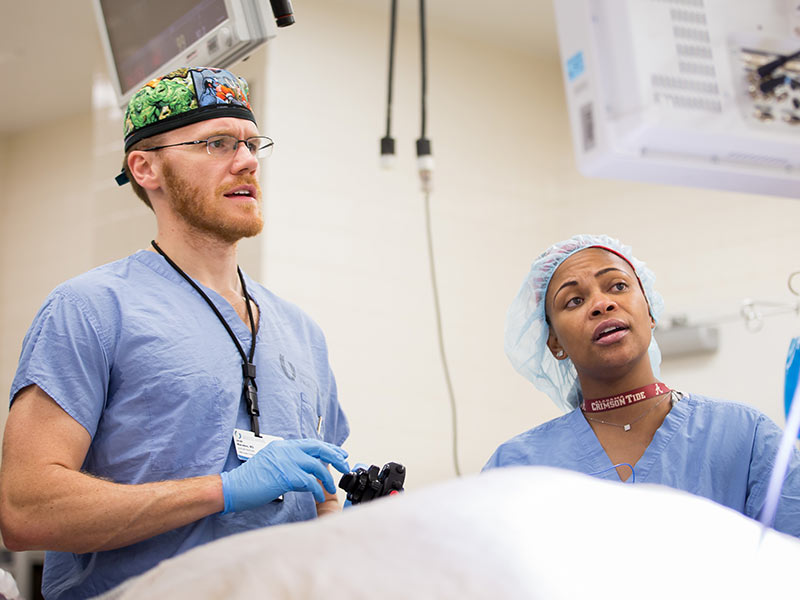Co-founder of major alternative rock band hospitalized and in intensive care
The co-founder of a renowned alternative rock band, whose music has resonated with millions of fans across the globe, has been hospitalized and currently resides in intensive care. This distressing news has left the music industry and fans in a state of shock. The musician, whose powerful riffs and innovative songwriting have shaped the band’s unique sound in the alternative rock scene, was admitted to the hospital following a sudden medical emergency.
Details surrounding the incident are scarce, but sources close to the band confirm that their bandmate is receiving the best medical attention possible. The hospitalization has inevitably prompted a wave of concern among fans, fellow musicians, and industry professionals alike.
The band, whose music has been a beacon of solace and connection for countless listeners, is known for their unyielding spirit and resilience. As news of the co-founder’s hospitalization continues to circulate, fans have taken to social media platforms to express their concern, prayers, and well-wishes, creating a massive outpouring of love and support for the ailing musician.
The band’s management has thanked fans for their support and has asked for privacy during this challenging time, assuring fans that updates on the co-founder’s condition will be given when appropriate. This incident serves as a stark reminder of the fragility of life, even for those who seem invincible under the spotlight. As fans, friends, and family wait for updates, they hold onto the hope that their beloved musician will soon recover and return to the stage where he belongs.

Importance of the Band and Co-founder
The significance of a band and its co-founder can never be underestimated. The co-founder, often the creative powerhouse, sets the tone, vision, and style of the music, fostering a unique identity that sets the band apart from others. As the visionary, the co-founder is pivotal in crafting the sonic aesthetic and lyrical landscape, encapsulating the ethos and the narratives the band wants to convey. This singular vision can be the driving force that propels the band to the forefront of the music industry.
The band, on the other hand, acts as the vehicle that brings this vision to life. Each member contributes their individual talent and skill, adding depth and dynamics to the music. They harmoniously blend their unique sounds, creating a symphony that resonates with the listeners. The synergy between the band members can create a musical experience that is not only captivating but also emotionally evocative and thought-provoking.
In the public’s eye, the band and the co-founder represent the face of the music, connecting with fans globally. They become cultural icons, influencing fashion, lifestyles, and even societal values. Their music becomes the soundtrack of people’s lives, capturing moments of joy, sorrow, love, and loss.
In essence, the co-founder and the band are integral to each other’s success. The co-founder’s vision and leadership coupled with the band’s collective talent can create a powerful musical force. They drive the evolution of music, pushing boundaries and challenging status quo, thereby leaving an indelible mark on the cultural landscape. Ultimately, the symbiotic relationship between the band and its co-founder is what shapes the music industry, influencing generations of music lovers and musicians alike.
Hospitalization Announcement: Details and Initial Reactions
An announcement of hospitalization often brings about a whirlwind of emotions and responses. The announcement usually involves sharing critical details about the patient’s condition, the medical institution where the patient is being treated, the expected duration of the stay, and the prognosis. This information is generally shared with immediate family members, close friends, or in some cases, the public, especially when the individual is a public figure.
The initial reactions to such news can vary greatly depending on the recipient’s relationship to the patient and the severity of the patient’s condition. Some may respond with shock and disbelief, particularly if the hospitalization is due to a sudden illness or accident. Others may experience a surge of anxiety or fear, especially when the health issue is grave or life-threatening. In contrast, if the hospitalization is planned or due to a less severe condition, the announcement may be met with relief or acceptance. Empathy and concern are also common reactions, with many offering their support and assistance to the patient’s family.
Despite the range of potential reactions, it’s essential that these announcements are handled with sensitivity and respect for the patient’s privacy. It’s also crucial to provide accurate information to avoid unnecessary panic or worry. Above all, a hospitalization announcement should be seen as an opportunity for loved ones to rally around the patient, offering emotional support and strength during a challenging time.

Health Update: Condition in Intensive Care
The status of patients in the intensive care unit (ICU) remains critical and requires the utmost attention and care. These individuals are often in a precarious state of health, grappling with life-threatening conditions such as severe infections, organ failures, or traumatic injuries. The ICU, equipped with advanced medical technology and staffed by highly trained professionals, is a vital resource in the battle to stabilize and improve their health status.
Updates on their condition can fluctuate significantly, given the severity of their health problems and the unpredictable nature of their recovery. The medical staff must monitor them closely, with regular checks on vital signs, and make necessary adjustments to treatment plans. The process is not merely about administering medications or performing surgeries, but also managing the patient’s overall well-being, attending to their psychological state, and providing the necessary support to their families.
The condition of patients in the ICU can be indicative of broader health trends. For instance, during the COVID-19 pandemic, an increase in ICU admissions signaled escalating community transmission and severe disease. It also highlighted the strain on healthcare resources, necessitating urgent public health measures to control the spread of the virus.
However, despite the challenging circumstances, there have been promising developments. Advancements in medical technology, therapeutics, and care protocols have improved outcomes for ICU patients. Innovative treatments, such as the use of ECMO (Extracorporeal Membrane Oxygenation) in severe respiratory failure patients, have shown potential in enhancing survival rates.
Yet, the condition in intensive care remains a delicate balance, requiring constant vigilance and adaptability. It is a testament to the resilience of patients battling severe health issues and the unrelenting dedication of the healthcare professionals who care for them. As we continue to navigate through complex health challenges, the condition in intensive care serves as a vital barometer of our healthcare system’s capabilities and the collective health of our communities.
Band and Fan Support: Messages and Well-Wishes
Band and fan support is a significant aspect of the music industry, and it often manifests itself through heartfelt messages and well-wishes. This emotional exchange creates a unique bond between musicians and their listeners, establishing a sense of community that extends beyond the shared appreciation for music. Fans often send letters, post comments on social media, or bring signs to concerts expressing their admiration and encouragement for their favorite bands. These communications are not only a testament to the fans’ dedication but also serve as a motivation for the band members.
Conversely, bands also make it a point to express their gratitude towards their fans. This can range from acknowledging their support during concerts, replying to fan mail, or posting appreciative messages on their social media platforms. These interactions are crucial in fostering a strong relationship between the two parties.
However, it is essential to note that while these exchanges are generally positive, they can occasionally veer towards negative territory. Overzealous fans might cross boundaries or become invasive, causing distress to the band members. In such instances, it is vital for the band members to address the issue delicately without causing any further harm or escalation.
On the whole, messages and well-wishes between bands and fans play an integral role in the music ecosystem. They help cultivate a sense of belonging, promote positive interaction, and foster mutual respect. It’s a beautiful symbiosis where both parties, bound by the love for music, continuously fuel each other’s passion and dedication.
Impact on Tours and Events: Future Plans
The global tourism and events industry has experienced an unprecedented upheaval due to the recent global pandemic. The impact on this sector has been profound, with most tours and events either being postponed indefinitely or cancelled altogether. As a result, the future plans for the industry are being revised with a focus on adaptability and resilience.
The advent of virtual tours and events has been a significant shift, offering a digital alternative that allows for continuity while adhering to safety guidelines. The use of technology has indeed been a saving grace, helping to salvage a portion of the industry’s revenue while offering unique experiences to visitors and attendees. However, while this is an innovative solution, it can never fully replicate the authentic experience of physical travel and participation.
Another aspect of future plans involves rethinking the logistics of tours and events. This includes reduced group sizes, staggered timings, and implementing strict hygiene protocols. There is also a growing emphasis on promoting local tourism, encouraging people to explore their own regions. This strategy not only supports local economies but also reduces the risk associated with international travel.
Sustainability is another key factor that is expected to shape the future of tours and events. In the aftermath of the pandemic, there is a heightened awareness of our impact on the environment. Consequently, there is a shift towards eco-friendly practices, such as minimizing waste, promoting local cultures and crafts, and using renewable resources.
The way forward for the industry is to embrace these changes and adapt to the new normal. While the situation poses significant challenges, it also offers opportunities for innovation and reinvention. By focusing on sustainability, digital transformation, and local tourism, the industry can not only recover but also emerge stronger and more resilient.
In conclusion, the future of tours and events will be shaped by how well we adapt to these changes, and the lessons we learn during this challenging period. It is a testament to the resilience of the industry, and an opportunity to redefine what tourism and events mean in the 21st century.
Medical Updates and Recovery Expectations
Medical updates and recovery expectations are crucial areas of healthcare and patient management. They provide vital information on the progress of treatment and help set a clear roadmap for a patient’s journey towards recuperation. Medical updates involve regular monitoring and recording of a patient’s health condition, which may include changes in symptoms, response to medication, and overall health improvement or decline. These updates are essential for physicians, as it enables them to evaluate the effectiveness of the treatment plan and make necessary adjustments if required.
On the other hand, recovery expectations refer to the projected outcomes of a patient’s healing process. These expectations are based on several factors such as the nature and severity of the illness, the patient’s overall health status, age, and the effectiveness of the treatment. Recovery expectations can play a significant role in shaping a patient’s mindset towards their healing process. It may influence their motivation levels, adherence to treatment, and overall quality of life during and after recovery.
It’s worth noting that medical updates and recovery expectations are interconnected. Accurate medical updates can aid in setting realistic recovery expectations, thereby facilitating a smoother and more effective healing process. Regular communication between healthcare providers and patients regarding these updates and expectations is crucial. It fosters a sense of trust and understanding, which can significantly enhance the overall healthcare experience for the patient.
Furthermore, the advancements in healthcare technology have improved the accuracy and ease of providing these updates and setting recovery expectations. Technologies like Electronic Health Records (EHRs), telemedicine, and mobile health apps allow for real-time tracking of a patient’s health condition and better communication between the healthcare provider and the patient. Therefore, in the modern healthcare system, the role of medical updates and recovery expectations is more significant than ever in ensuring effective patient care and management.

Continued Support and Community Response
Continuous support and community response play a critical role in driving positive social change. These two elements are foundational to creating environments where individuals feel valued and understood. Continuous support refers to the ongoing assistance provided by individuals, organizations, or groups to help others in their journey of growth and development. This could be in the form of resources, mentorship, infrastructure, or simply emotional encouragement. It serves as a lifeline, especially for those in challenging situations, enabling them to overcome obstacles and thrive.
On the other hand, community response is the collective reaction of a community towards a particular event or situation. It is a measure of the community’s engagement and sense of responsibility. For instance, in the wake of a disaster, the community’s response could manifest as fundraising efforts, providing shelter to those affected, or volunteering for clean-up activities. The strength of a community response often depends on the level of unity, empathy, and solidarity among its members.
The relationship between continued support and community response is symbiotic. A strong community response often stems from a culture of continued support, wherein individuals are accustomed to helping each other. In return, this culture is further reinforced when the community comes together to respond to a situation. Both elements foster a sense of belonging and togetherness, building stronger, more resilient communities. They also encourage active participation, with individuals stepping up to take on roles that contribute to the community’s overall well-being.
In conclusion, both continued support and community response are integral to fostering healthy, vibrant communities. They not only address immediate needs and crises but also promote long-term growth and stability. By nurturing these elements, communities can empower their members to reach their full potential while ensuring that no one is left behind.